#neoclassical britain
Explore tagged Tumblr posts
Text

Kenwood House, Hampstead Heath, London
#kenwood house#hampstead heath#london#pastels#stucco#perfection#pretty#Robert Adam#neoclassical britain#18th century#regency
7 notes
·
View notes
Text

Surrounded by lush gardens, The Ivy in Chippenham is well named.
#The Ivy#Chippenham#Wiltshire#The Cotswolds#1728#Georgian architecture#neoclassical#English mansions#UK#18th century#baroque aesthetic#country estate#rural britain
142 notes
·
View notes
Text
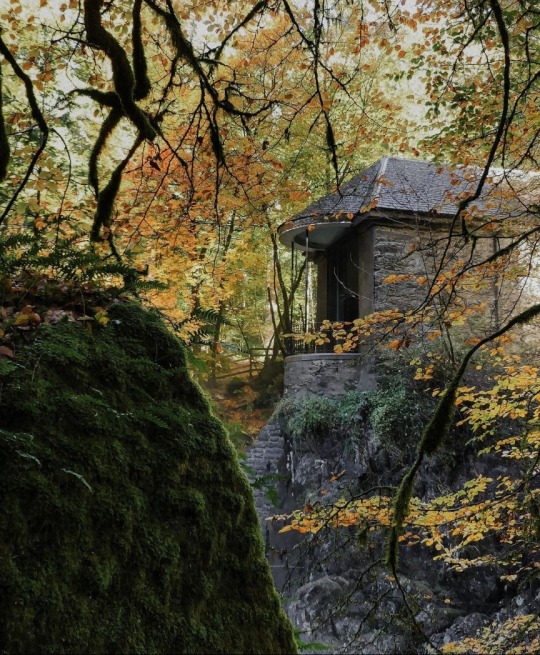
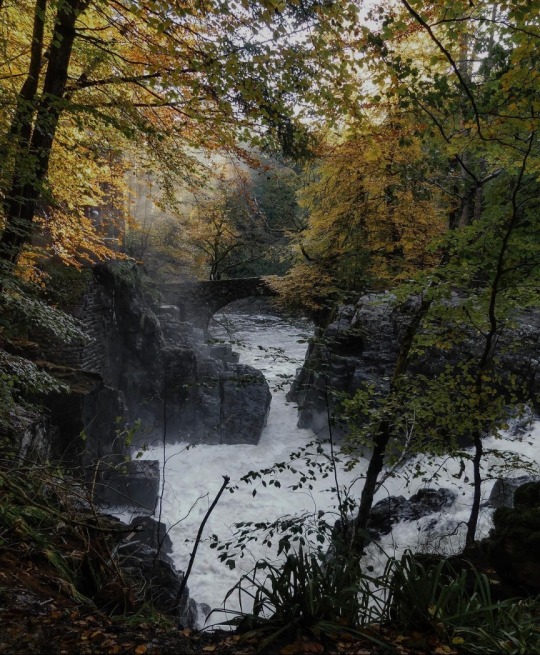


The Hermitage, Craigvinean Forest, Perthshire, Scotland
(happiness_behind the_lens)
#gothic#gothic architecture#georgian#neo classical#neoclassical#craigvinean forest#fall#autumn#dunkeld#perthshire#scotland#britain#great britain
123 notes
·
View notes
Photo
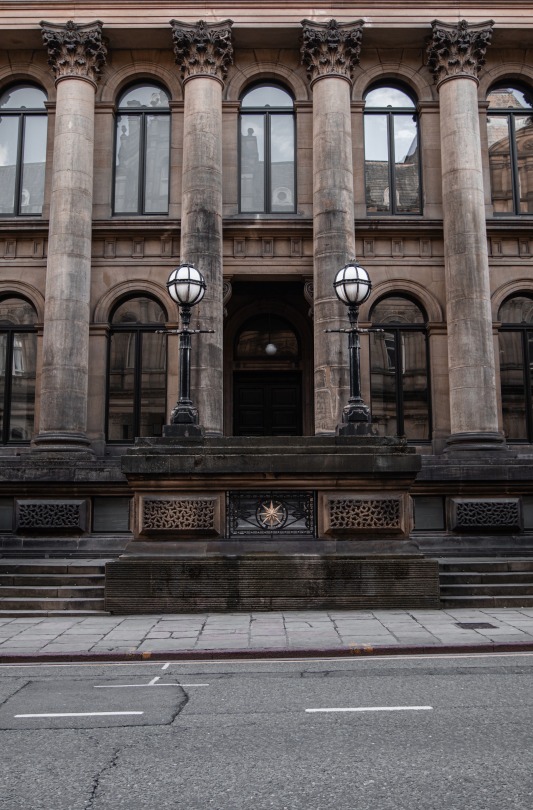
..
#dark academia#architecture#Street Photography#19th century#england#traveling#architektur#original photography#leeds#travel#reise#academia aesthetic#19. jahrhundert#travelling#reisen#classical architecture#great britain#united kingdom#neoclassical#classicist#klassizistisch#classicism#neoclassicism#klassizismus#columns#säulen#dark aesthetic#goth aesthetic#goth#dark academia aesthetic
17 notes
·
View notes
Text

Don't Be A Wallflower
Leeds Town Hall is an excellent example of Victorian Architecture and the civic pride that ensured their public buildings were as grand and as decorative as they could afford. Construction started in 1853 and was officially opened in 1858 by Queen Victoria herself, the building is now Grade I Listed.
I wrote more about the building in the link below
#leeds#leeds town hall#architecture#architecture design#architecture photography#baroque#building#city center#city centre#classical#classical architecture#decorative#design#detail#exterior#grade I listed#grade 1 listed#neoclassical#old#relief#sculpture#stone#stonemason#stonemasonry#stone masonry#urban#victorian#victorian architecture#west yorkshire#britain
0 notes
Text







On November 29th 1813 a campaign was launched in Dumfries to raise public subscriptions to fund a mausoleum for the poet Robert Burns.
The first attempt to have a memorial erected to Burns was made as far back as 1812, by John Forbes Mitchell of Bombay, and it is ironic that the first expression of a national, as opposed to a local, nature, should have come from overseas. Although Mitchell eventually collected a large sum of money for this purpose, it was not until he returned to Britain in 1819 that he could take practical steps to implement his proposals. In the meantime, plans for monuments to Burns had been maturing elsewhere.
In 1813, John Syme, who had been a close friend of Burns, campaigned to raise funds for the Mausoleum. The structure was designed by Thomas Frederick Hunt while sculptor Peter Turnerelli created the scene in marble of Burns at the plough contained inside.
On 19th September 1815 the poet`s remains were exhumed and re interred in the mausoleum. The service was attended by his wife Jean Armour, who had been unable to attend the original service as she was giving birth to Burns` son.
It was actually built by a local stonemason named John Milligan at a cost of just over £300. Though the structure was completed in 1817 Burns' body was moved to its new home in 1815 while the mausoleum was being built.Burns' wife Jean Armour was interred beside her husband in 1834. At this time a plaster cast was made of Burns' skull. Also buried in the mausoleum is the couple's son Maxwell Burns, who died in 1799 at just 2 years and 9 months old, and Francis Burns, another son who died in 1803 at 14 years old.
The mausoleum takes the form of a neoclassical rotunda with pairs of Ionic columns supporting an octagonal drum with a dome at the top. Within the mausoleum is a group of sculptures by Peter Turnerelli.
The sculptures show the ancient Muse 'Colla', a representation of the Ayrshire region of Kyle where Burns was born, throwing her mantle over Burns while he ploughs a farm field. The cloak is a mantle of inspiration, a reflection of how Burns' life early life in Ayrshire inspired his poetry. Colla's mantle of inspiration summons Burns the ploughman to become Burns the poet.
The original sculptures were replaced by copies sculpted by Hermon Cawthra in 1936. They were installed as part of an effort to restore the mausoleum and were unveiled by Prime Minister Ramsay MacDonald.
The mausoleum is made of local red sandstone. Around 1880 the structure was painted bright white, with the dome a pale green. The base of the mausoleum is open on three sides, but each of these sides is now protected by an iron gate so that you can see within but cannot actually enter the building.During the 19th century the Dumfries Burns Club began a custom of laying a wreath at the mausoleum on Burns' birthday (25th January) and the custom continues to this day.
The Burns Mausoleum is listed Grade A for its heritage value.
9 notes
·
View notes
Text
Admired for its neoclassical elegance, the [...] silhouette of the early 1800s is linked to ideals of reforms [...]. For many these dresses embody the period depicted in Jane Austen’s novels, made familiar through cosy Sunday evening costume dramas. However, the sophisticated fashions worn by the Miss Emma Woodhouses of society were made possible only through the exploitation of people thousands of miles away. One of the most popular materials for these gowns was cotton, either a finely woven version known as muslin worn for evening wear or a slightly heavier weight cotton that was printed and used for day dresses. [...] When cotton became fashionable in the 1770s the best cotton muslins were imported as woven cloth from Bengal, which had been annexed on behalf of Britain by the East India Company in 1765. However, by the late 1700s vast amounts of raw cotton was imported from the southern states of America and the West Indies. Many of these cotton plantations, especially those in the Caribbean, were owned or managed by Scots, with the cotton sewn and harvested by enslaved men, woman and children brought over from Africa as part of the transatlantic slave trade, or their descendants. Cotton became a large part of the Scottish economy. The raw material was imported via Clyde ports from 1775 with 2,732,725 lbs imported in 1790 rising to 8,421,820 lbs in 1805. Cotton mills, which processed the raw cotton balls, were built creating a new industry. The first mill was built in Penicuik, Midlothian, but the majority were in Glasgow and surrounding counties, including New Lanark, where the damper climate aided production. Threads were spun and cloth woven, with further industries developing that embellished this naturally white fabric by embroidering, dying or printing on it. Some was sold and used here in Scotland, but the majority was exported with the result that cotton took over from wool as the leading British export good in 1803 – a position it held until 1938.
---
All text above by: Rebecca Quinton. “The Black History of White Cotton Dresses.” Legacies of Slavery in Glasgow Museums and Collections (a website maintained by curators and researchers of Glasgow Museums). 5 February 2019.
70 notes
·
View notes
Text
Traditionally incoming Argentinian presidents give an inauguration speech inside of Congress to other politicians. Javier Milei, a former “tantric sex instructor” turned libertarian economist, symbolically gave his speech with his back to the Congress facing towards the people.
“For more than 100 years, politicians have insisted on defending a model that only produces poverty, stagnation, and misery,” President Milei said. “A model that assumes that citizens exist to serve politics, not that politics exists to serve citizens.” He also promised an “end a long and sad history of decadence and decline” and promote a new era based on peace, prosperity, and freedom.
Since his headline-making election victory last month, media portrayal of Milei has ranged from dismissive to condescending, often depicting him as an eccentric “far-right populist.” Yet, since taking office, Milei has shelved many of his campaign’s more contentious proposals and begun implementing a radical but, by international standards, orthodox reform plan to revitalize Argentina’s faltering economy.
Milei inherited a challenging situation. Argentina’s economy has shrunk by 12 per cent over the last decade, annual inflation reached an extraordinary 160 per cent in November, while the poverty rate increased to 40 per cent in the first half of 2023.
Argentina has a fascinating economic history that led up to this point. In the 19th century post-independence Argentina adopted a liberal constitution that helped deliver an impressive economic expansion.
By the early 20th century, Argentina was one of the world’s richest countries, driven by agricultural exports. Real wages were comparable to Britain and only slightly below the United States. Millions fled destitution in southern Europe for a new life in Argentina. Buenos Aires has been labelled the “Paris of South America” because of spectacular neoclassical architecture built during this era.
This turned to disaster over the subsequent decades because of collectivist rule – from military dictatorships to avidly socialist leaders. Argentina nationalised industries, subsidised domestic production, limited external trade, and introduced an unaffordable welfare state. This has become known as the Peronism, named after 20th century president Juan Domingo Perón, a leftist populist leader who supressed opposition and controlled the press.
This agenda accelerated in recent decades under self-identifying Peronist leaders, turning Argentina into one of the world’s most closed and heavily regulated countries. The latest Human Freedom Index places Argentina at 163rd in the world for openness to trade and 143rd for regulatory burden. This has culminated in an economy on the precipice of economic disaster.
Not wasting any time, Milei has proposed a mega package of over 350 economic reforms to open the economy and remove regulatory barriers. This includes privatising inefficient state assets, eliminating rent controls and restrictive retail regulations, liberalising labour laws, lifting export prohibitions, and allowing contracts in foreign currencies.
There has been a notable absence of some of most radical ideas – such as legalising organ sales or banning abortion. He has also put on hold plans to dollarise the economy and abolish the central bank. Instead, at least by international standards, the agenda contains several orthodox economic reforms.
Many of the measures – such as cutting spending to get the deficit (currently at 15 per cent of GDP) under control, opening the country up to international trade, and liberalising the airline industry through ‘open skies’ policy – would be required to join the European Union. The government is eliminating capital and currency controls and allowing the peso to devalue – measures that the IMF’s managing director Kristina Georgieva said these are important to stabilise the economy.
There are undoubtedly significant challenges ahead and some darker elements to agenda.
Milei has been, uncharacteristically for a politician, honest that “in the short term the situation will get worse”. The removal of price controls, for example, will increase inflation until demand and supply can stabilise to end shortages. But, he says, “then we will see the fruits of our efforts, having created the foundations of a solid and sustainable growth over time.”
The government is facing significant opposition, with the union movement organising mass protests and threatening a general strike. The government has responded by proposing questionable new anti-protest laws, that include lengthy jail sentences for road-blocking and requirements to seek permission for gatherings of more than three people in a public place. Milei, who could struggle to get much of his agenda through Argentina’s Congress, is asking for sweeping emergency presidential powers until the end of 2025. This raises serious questions about democratic accountability.
Nevertheless, there are some positive early signs. Since Milei’s election Argentina’s flagship stock index has risen by almost one-third and the peso’s value has not collapsed. Argentina could soon benefit from a major new shale pipeline pumping one million barrels of crude a day (helped along by reforms that allow exports of oil and sales at market prices) and the mining of the second largest proven lithium reserves in the world.
Argentina has long served as a solemn reminder that prosperity is neither inevitable nor unassailable. Misguided policies can transform mere challenges into a profound crisis. Milei is offering a glimmer of hope: redemption may just be possible. Let’s also hope that Britain’s leaders can similarly take the path of reform, ideally before things get as bad as Argentina.
Matthew Lesh is the Director of Public Policy and Communications at the Institute of Economic Affairs
12 notes
·
View notes
Text
One day in Oxford
Location: Oxford, Oxfordshire
Why visit?
It's the city of "dreaming spires", according to the poet Matthew Arnold. Located in the heart of England, Oxford is like nowhere else and transports visitors to a world of academic excellence.
Known for its prestigious university and stunning architecture, Oxford offers an exciting mix of history, culture and scholarly pursuits.
Where to stay in Oxford
From London, visit Oxford and the Cotswolds on a one-day tour*
The university, one of the oldest and most prestigious educational institutions in the world, bears witness to Oxford's scientific heritage. As you walk through the city, you will come across magnificent university buildings, libraries and lecture halls that have nurtured the minds of countless scholars, writers and thinkers over the centuries. Explore the iconic Bodleian Library, one of Europe's largest and most important libraries, home to countless manuscripts, rare books and historic works of art. Immerse yourself in a rich academic atmosphere and follow in the footsteps of history's greatest minds.
Explore Oxford's history and treasures with expert guides. Includes Ashmolean Museum & more*
The architectural beauty of Oxford is worth seeing. The streets of the city have excellent examples of Gothic and neoclassical architecture. The famous Radcliffe Camera, a circular library that serves as a symbol of Oxford, stands majestically in the heart of the city. With its impressive cathedral and grand refectory, which inspired the Great Hall in the Harry Potter films, Christ Church College showcases the magnificence of Oxford's architectural heritage. From the magnificent towers of the University Colleges to the picturesque bridges over the River Cherwell, Oxford is a visual feast for architecture lovers.

The city's museums and galleries offer many cultural experiences. The Ashmolean Museum, Britain's oldest public museum, contains an extensive collection of art and antiquities from around the world. Immerse yourself in the scientific wonders of the Natural History Museum or explore the Pitt Rivers Museum, known for its extensive ethnographic and archaeological displays. Art lovers will be delighted by Oxford's Museum of Modern Art and the History of Science. Oxford's cultural institutions offer a diverse range of exhibitions and events, ensuring that there is something exciting for every visitor.
Oxford's literary connections are legendary. It has long been the muse of writers including J.R.R. Tolkien, C. S. Lewis and Lewis Carroll. Discover the inspiration behind the beloved stories The Lord of the Rings, The Chronicles of Narnia and Alice's Adventures in Wonderland as you explore the city's corners. Visit the Eagle and Child pub, home to a famous literary group called the Inklings, and enjoy the literary history of the city's streets.
The charming atmosphere of Oxford's colleges and gardens add to its charm. Stroll leisurely along the winding paths of the University Parks or explore the manicured gardens of Magdalen College. Enjoy a leisurely ride on the River Cherwell and admire the picturesque scenery as you glide.

Oxford's green spaces offer a peaceful escape from the busy city and provide opportunities for relaxation and reflection. Oxford's vibrant cultural life thrives thanks to theatre, music and festivals. Various performances are organised in the city, from classical concerts to modern theater productions.
The Oxford Playhouse and the Sheldonian Theatre are well-known venues that host a range of shows throughout the year. The annual Oxford Literary Festival and Oxford May Music Festival attract acclaimed artists, writers and musicians from around the world, further enriching the city's cultural tapestry.
Wander through historic colleges, visit the famous Bodleian Library and experience the educational atmosphere of this prestigious university town.
History
The origins of Oxford can be traced back to the Saxon period, but it rose to prominence with the arrival of the University of Oxford in the 12th century. The colleges of the university, such as Christ Church and Magdalen, are architectural marvels that reflect different periods between Gothic and Neoclassical. Oxford has been a centre of academic excellence, producing outstanding scholars, writers and leaders throughout its history.
Links marked with an asterisk may pay us if you book!
3 notes
·
View notes
Text
anyway that's why imperial civic neoclassical architecture in the postindustrial north of britain is the truest expression of classicality
3 notes
·
View notes
Link

0 notes
Text
General advice for city trip to Chennai – Sights of Chennai, Tamil Nadu, India
Chennai, which is the capital of Tamil Nadu province is located along the southern coast of India on the Bay of Bengal. There is a fairly long sandy coastline and an opportunity to walk along the promenade taking in fresh, sea air.
Earlier known as Madras, Chennai was one amongst the cities severely devastated by the 2005 tsunami. The city as recorded in the 2001 census had over 7 million people in its population density.
Highlights of Chennai
Exploring Local Chennai
Chennai is homely, noisy, and tiring – though this may prove too strong a word in the midst of the accompanying hustle and bustle. Looking for nice eating places or leisure can sometimes be a problem, local life however is hectic yet interesting. Go outside the shops and roads where there are horns, sounds and music from the shops and different roads.
Colorful Shopping Streets
Small shops are located almost on each street, and one can find almost everything one could wish for. The do-it-yourself shops themselves are as small as the greengrocers but they have almost everything available. The physiognomy of the city is very particular where the houses are constructed one on top of the other.
Foreshore Estate Promenade
The Foreshore Estate Promenade is the beach where the horrible disaster of the tsunami struck years ago. Several zones are still vacant since the buildings that were affected by the tragedy were never reconstructed. The fish market here is not touristic but is a major experience that involves women who sell fresh fish of the day.
Kamarajar Promenade
This one is slightly more advanced with parks, memorial, and buildings. This is a road that runs for quite a distance and ideal for either a walk, jog or even riding in a car. There are statues of Mahatma Gandhi also there is a memorial in memory of the former chief minister of Tamil Naidu M. G. Ramachandran.
Religious Highlights of Chennai
Vivekananda House
The young Swami Vivekananda visited Chennai in 1893 and was Meditating to live in this spiritually sacred city along with his disciples. He went to Chicago to partake in the Parliament of Religions and came back to India in 1897.
Ramakrishna Universal Temple
This is the worship, and education temple that has been constructed through the followers and disciples of Vivekananda. This is one of the significant centres of daily rituals ( pujas) and food donation.
Santhome Cathedral Basilica
This stunning white building that can be classified as a basilica is situated near the fish market downtown. Large fans are used during services to create a cool draught.
St. Andrew’s Church
This neoclassical church that was constructed in 1821 is among the most exquisite churches found in India. Architecture-wise, it is easily a place that one must pay a visit to.
Hindu Temples
In the Tambaram area where the college is situated there are many temples and chennai itself is known as the temple city of India. Some of the famous temple includes Arulmigu Sri Parthasarathyswamy Temple and the Kapaleeshwarar Temple. If you get a local rickshaw driver to take you to these temples, you will probably be pointed to even more gorgeous structures.
Food in Chennai
Local Cuisine
Idli which is a rice cake that has to be eaten with different sauces and spices is a delicacy worth taking. It is high on the menu list preferred by the people in the region as a breakfast meal. Make good food your allies and enjoy meals in the most frequented restaurants of the city, which, as it is known, boasts exquisite Indian segments.
Where to Eat
Regarding the availability of restaurants in Chennai, one can say that there are many of them. Local specialties should also be identified and the diverse food culture should be tapped.
Worthy of visit, but slightly outside Chennai
Fort St. George
Today we begin to see Britain establish forts in India and this one was set up in 1639. As a consequence of this contact, William makes Pegu the starting ground for the trade of the British East India Company in Tamil Nadu.
Saint Thomas Mount
Sitan pillar or also known as Maha Kailash near Chennai International Airport has scenic view early in the morning or in the evening specially during sunset. You will find, at the base of the hill, the St. Thomas Garrison Church associated with the Syrian Christian…
Sadras Dutch Fort
This fort is about 70 kms from Chennai and best done as a day trip along the coast. This fort
also has graves belonging to the Dutch and it provides a historical background of the region.
Accommodation in Chennai
Chennai has all types of hotels in Chennai and hostels ranging from those that are cheap to those that are expensive depending on the client’s preferences.
Here are a few options to consider:Here are a few options to consider:
Luxury Hotels: Such provide the best facilities and these are normally situated in central parts of town. While choosing a good hotel, it’s important that the hotel is centrally located in Chennai to make it easy to access hotels.
Mid-Range Hotels: These are quite comfortable and quite cheap to a certain extent. It is well-positioned, and many possess facilities, common to most urban centers, that complements aged people’s needs.
Budget Hotels and Hostels: Cheap places that may not offer many facilities to the guests although they may be located at strategic positions in the city.
When deciding which hotel to take, it is important to note their location relative to the activities which are planned and the possible attractions.
Simplified Checklist for a Successful City Trip to Chennai
Plan Your Itinerary: Organize the choreographed and spontaneous visits of localized tourist attractions including local markets, promenades, religious places, and popular tourist attractions.
Travel Smart: Local rickshaws are recommended, so that that the tourists get a real feel of the towns culture. They can transport you to areas that would be hard to get to on you own.
Stay Hydrated: Chennai is rather hot, especially in summer, it is very important to stay hydrated and take some rest at least whenever you feel warm.
Embrace Local Culture: It is also advisable to taste local foods, communicate with locals and go beyond the standard touring around the significant attractions.
If you abide by these tips and discover the checked landmarks, you’ll definitely have an enjoyable stay in Chennai. Here are some of the top things to do in the city and the tasty meals you will have to try!
0 notes
Text
Worldbuilding | North African Livelihood, 1920
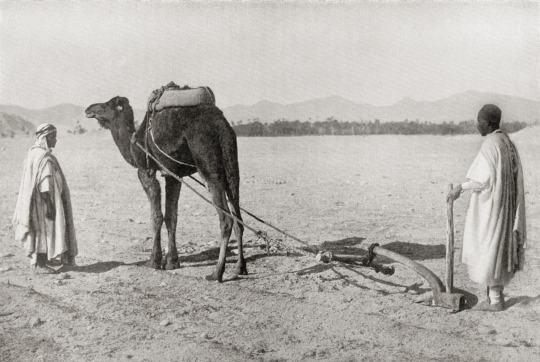
A Camel Plow Being Used In Algiers, Algeria, North Africa, In The Early 20th Century.
As a result of being situated so close to Europe, North Africa was majorly under Spanish or French rule during the early 20th century. The Moroccan protectorate itself was established in 1912, after the Entente Cordiale—a treaty concluded between France and Britain in 1904, which settled a number of hostilities between the two countries—and the Cameroons had been ceded to Germany in 1911. Both acts together left France free to divide the country with Spain, which took over the Rif Mountains in the north and the border region with the Spanish Sahara in the south. Libya was similarly invaded by Italy in 1911, but the prolonged resistance of the Sanūsiyyah in Cyrenaica denied the Italian Fascists control of the country until 1931.
During this time, art schools in Egypt focused on academic, Renaissance-based training; the Orientalist and post-Impressionist imagery of the French settlers overshadowed indigenous modernist ones by Moroccan, Algerian, and Tunisian artists. European schools and galleries featured romanticised imagery of the local landscape.
Following World War I, North Africa was swept by a tide of nationalist and anticolonial movements; artists and intellectuals struggled to define national culture in the face of their particular histories and colonial realities. Debate among Egyptian intellectuals and writers centered on building a secular nation-state based on European models with an emphasis on education, industrialisation, and the emancipation of women. The Egyptian national government supported art institutions and sent graduates of the school, both men and women, to study in Europe, making Egypt a regional nexus for artistic innovation and training. Art as a creative discourse among modern Egyptians found its purpose at first in the nation’s reformist aspirations; intellectuals and artists were seen as best qualified to define the new features of modern Egypt. Thus, the movement for independence in Egypt accelerated.
In contrast to Egyptian artists, who benefit from the support of a national government and local patronage, other North African artists were marginalized, receiving limited training or support. The French promoted North African self-taught artists’ work in France as the art of an underdeveloped nation. They were more interested in reviving traditional Moroccan crafts. Despite their proximity to Europe, North African artists did not adopt contemporary Western art and techniques. Early works by these artists followed academic styles, adaptations of illumination and miniature painting. Without access to modern art institutions, North African artists rejected the imposed Orientalist and Neoclassical modes; many moved to France, where they adopted the new trends in Abstract Expressionism and other contemporary styles, returning after independence to lead a new international art movement. In the post-independence period, calligraphy emerges within the realm of abstraction in this region, as well as in other Arab countries.
France’s harsh occupation in Algeria was a reflection of its conception of the country as an extension of itself; French replaced Arabic in all public schools, and indigenous history and culture were excluded from the curricula. Foreign occupation continued to fuel a growing secular movement for independence.
As a result of these influences, there were several languages spoken by the people of North Africa during this time. They were as follows;
Arabic
French
Hebrew
Farsi
Portuguese
Spanish
Swahili
Turkish
Twi
Additionally, there were a few more spoken by specific local communities;
Berber/Imazighen (with regional dialects)
Punic
African Romance
Lybic
Coptic
Nubian
Greek
With the exception of Imazighen languages and Nubian, the rest are considered extinct languages.
1 note
·
View note
Text

Mike Nelson born 1967
Wood and steel workbench, wood, steel panels and enamelled signs
2500 × 4500 × 2620
Note: Floorboards
SUMMARY
The Asset Strippers (Heygate stack, equivalent for a lost estate) 2019 is a large sculptural assemblage made from reclaimed industrial items and materials. It was made as part of Mike Nelson’s larger project The Asset Stripers, his response to the Tate Britain Commission for the Duveen Galleries in 2019. The work comprised of a horizontal pile of graffitied steel awnings and enamelled signs, stacked between timbers resting on top of five railway sleepers. The 2.6-metre-high stack is balanced across a wood and steel workbench supported by wooden flooring. A single drawer at the front of the bench is left partially opened, lending the work a sense of abandonment that is further emphasised by the broken floorboards supporting the bulky mass of materials above. The awnings were originally used to secure residences on the condemned housing estate in Walworth, South East London from which the work takes its title. The Heygate Estate was demolished between 2011 and 2014 as part of the planned urban regeneration of the area around the Elephant and Castle road interchange. The precarious nature of the vast stack combined with the stale odour and ruined appearance of the timber lend the work an overwhelming sense of melancholy. Two other assemblages from The Asset Strippers are also in Tate’s collection: The Asset Strippers (Elephant) 2019 (Tate T15413) and The Asset Strippers (Witness) 2019 (Tate T15411).
To make these works Nelson scoured online auctions of asset strippers and company liquidators to amass a collection of remnants from Britain’s manufacturing and construction industries. In the press release for his Tate Britain exhibition, he explained:
Their manipulation and arrangement subtly shifts them from what they once were into sculpture, and then back again to what they are – examples of the machines and equipment left over from industry and infrastructure. The exhibition weaves this allusion with that of British history. It presents us with a vision of artefacts cannibalised from the last days of the industrial era in place of the treasures of empire that would normally adorn such halls. (Mike Nelson, in press release for The Asset Strippers, Tate Britain, London 18 March 2019, https://www.tate.org.uk/press/press-releases/mike-nelson-asset-strippers, accessed 25 July 2019.)
An interest in the cultural and social contexts behind objects, as well as their material qualities, lies at the heart of Nelson’s practice. When reassembled and placed in the Duveen Galleries at Tate Britain, these sculptures transformed the neoclassical galleries into a warehouse of industrial objects that pointed to the decline of British industry, infrastructure and the welfare state. Nelson further commented:
I was interested in how an exhibition space used for the display of sculpture could be linked to the imperial and political status of Britain through the very materiality of the sculpture that it displays. These artefacts are not from the extensive British empire or from British foreign interests or colonial excursions, but they are the last remaining vestiges of what made these grand museums possible – industry. What I have accumulated here are the ends of an era, the cannibalising of all we have left – a sort of self-consumption, an eating away of ourselves. (Nelson, in conversation with Tate curators Clarrie Wallis and Elsa Coustou, 28 February 2019.)
Such works typify Nelson’s practice of assembling found objects to create large-scale, site-specific sculptural installations that are loaded with socio-political meaning and webs of references to history and current affairs, as also seen in the multi-room installation The Coral Reef 2000 (Tate T12859).
Further reading Mike Nelson: Again, More Things (A Table Ruin), exhibition catalogue, Whitechapel Gallery, London 2014. Mike Nelson: The Asset Strippers, exhibition leaflet, Tate Britain, London 2019.
Isabella Maidment July 2019
0 notes
Text
Rococo Movement
Centred in France and emerging as a reaction to the Baroque grandeur of King Louis XIV's royal court at the Palace of Versailles, the Rococo movement or style of French painting was associated particularly with Madame Pompadour, the mistress of the new King Louis XV, and the Parisian homes of the French aristocracy. It is a whimsical and elaborately decorative style of art, whose name derives from the French word 'rocaille' meaning, rock-work after the forms of sea shells.
In the world of Rococo, all art forms, including fine art painting, architecture, sculpture, interior design, furniture, fabrics, porcelain and other "objets d'art" are subsumed within an ideal of elegant prettiness
Rococo art is exemplified in works by famous painters like Jean-Antoine Watteau (1684-1721) especially his 'fete galante' outdoor courtship parties; Jean-Honore Fragonard (1732-1806) with his pictures of love and seduction; Francois Boucher (1703-70) with his lavish paintings of opulent self-indulgence; the Venetian Giambattista Tiepolo (1696-1770) known for his fantastically decorative Wurzburg Residence Frescoes (1750-3); and the sculpture of Claude Michel Clodion (1738-1814), sculptor of the Arc de Triomphe in Paris, best known for his Terracotta sculptures of nymphs and satyrs. In Britain, Rococo painting achieved its zenith in the female portraits of Thomas Gainsborough (1727-88). Rococo was eventually replaced by Neoclassical Art, which was the signature visual style of Napoleon in France and of the American revolution
1 note
·
View note
Text
Gordon Castle
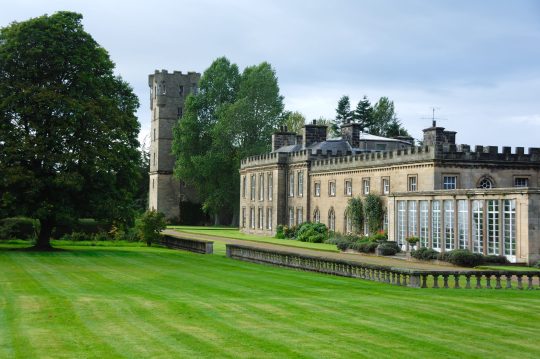
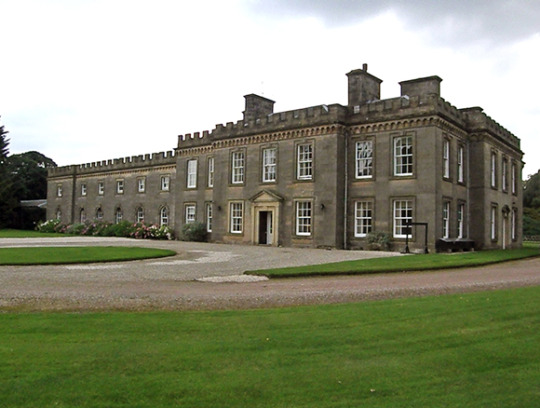



Gordon Castle is located in the parish of Bellie in Moray, Scotland. It served as the principal seat for the Dukes of Gordon. The six-story medieval tower house dates from 1498 and was built by George Gordon, 2nd Earl of Huntly. Later, it was incorporated into the center of the neoclassical four-story house with a pair of two-story wings built by his grandson in the late 18th century. The castle was used as a hospital for soldiers during WWI and then sold to the Crown in 1938 when the 9th Duke sold the estate and its contents to pay enormous death taxes. The estate fell into disrepair until after WWII when the grandson of the 7th Duke of Richmond and Gordon purchased it. During the restoration, much of the house was taken down due to rot and transformed into an attraction for the public. The estate sits on the Spey River, known for its world-class salmon fishing. The castle offers exclusive use accommodations in the castle, along with self-catering cottages. The property boasts gardens, a café, a child’s play center, and an eight-acre walled garden, one of Britain’s oldest and largest walled gardens. Using the family company that runs the estate, they created the Gordon Castle brand, which includes Gordon Castle Gin crafted from the botanicals grown in the Highlands. The Castle is not open to the public and only available exclusively.
1 note
·
View note